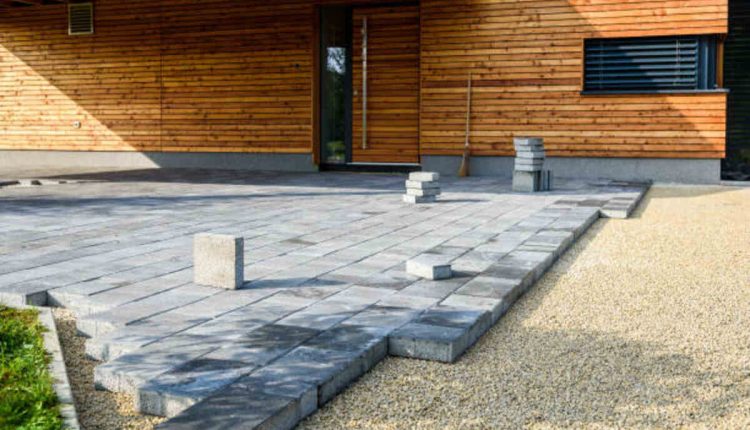Paving stones offer an appealing option for driveways, patios, and garden paths. Their variety of shapes, sizes, and colors provides endless design opportunities, while their low maintenance cost offers excellent savings over time. The best way to find asphalt companies is in Santa Fe.
Before beginning to lay paving stones, it is necessary to mark out the area with string or paint lines, then excavate up to six inches beneath its existing surface.
Durability
Paving stones are extremely resilient, making them ideal for driveways and patios. Their sturdy nature can withstand foot and vehicular traffic as well as varied weather conditions, lasting for many years with proper care and maintenance. Various sealers are available to protect paving from staining and moisture intrusion.
Paving stones provide an attractive, sustainable, and flexible alternative to concrete and asphalt, which may crack under pressure due to their wide variety of shapes, colors, textures, and aesthetic effects. Slate, limestone, and sandstone paving stones—to name just three—have something special about their aesthetic appeal that makes them great choices when creating different aesthetic effects.
Paving stones offer several distinct advantages over other forms of pavement. Their non-slippery surface and ability to withstand freeze/thaw cycles make them safer to walk on than other options. They are also more resistant than monolithic concrete slabs to heaving while shifting groundwater levels.
Paving stones are also very easy to repair. If a section of pavement needs replacing, all it takes to replace it is the removal and installation of affected stones – much easier than dealing with concrete or asphalt surfaces, which require entire sections of surface to be taken out and replaced at once.
Aesthetics
Paving stones can add character and elegance to your backyard by creating walkways, patios, and even water features. They offer an affordable alternative to concrete or asphalt driveways while increasing curb appeal and value, decreasing maintenance costs, and improving drainage.
Most pavement stones are made of clay brick or concrete and come in various shapes, colors, and textures—some designed to blend in seamlessly with their surroundings, while others serve as focal points. Paving stones are durable enough to handle heavy traffic without losing their beauty over time, and their maintenance requirements are low, too! They’re also easy to install—try these installation tips for inspiration.
Paving stones come in various varieties to meet every taste and budget, including natural stones, poured concrete, or asphalt paving stones decorated with patterns or colors to mimic stone, but eventually, wear and tear will reveal them for what they really are.
Natural stone pavers offer a rustic and organic aesthetic, while concrete block pavers boast more contemporary lines. Textured pavers add texture to your landscaping, while porcelain offers the look of natural stone without the costs or maintenance needs associated with its care and upkeep.
Maintenance
Paving stones are an easy and engaging way to add interest and value to your home, as well as easy maintenance. Unfortunately, however, like any material, they can become damaged through harsh chemicals and extreme weather conditions. Taking proper preventative care measures will keep them looking their best for years!
As your first step to laying pavers, mark the area you wish to cover using a string line, paint, or another outline method. After creating a clear representation of where they will go with string lines or paint and marking it out with paint or outline methods such as stringing dots on an outline map of an area with string lines or paint, begin measuring to calculate how many pavers will be needed based on length, width, and distance from edge of walkway or driveway to house before multiplying these measurements to calculate number of pavers necessary.
Paved stone pavement may not be as cost-effective as standard concrete slabs, but it’s still less expensive than most other forms of pavement and more durable and easier to maintain than most paving materials.
Paving stones come in an assortment of styles and colors, making them an excellent addition to any yard or patio. Their distinct texture creates a different look, adding character and flair to your property. Many permeable designs also exist so rainwater can infiltrate through them back into nature’s water table – this helps protect the environment more than slab concrete or asphalt, which promotes runoff that carries harmful toxins into lakes and rivers.
Cost
Paving stones make an attractive, versatile, and cost-effective choice for driveways and patios. They offer design flexibility, durability, low maintenance costs, easier DIY installation than concrete or asphalt-poured pavement, and cheaper installation than other forms of pavement—however, they may be more expensive than their alternatives.
As part of any paver project, it’s essential to map out the area you intend to cover with string, paint line, or another outline material such as gravel. This will give a clear depiction of the area you must cover and will enable you to determine how many paving stones you require for coverage. In addition, purchasing base material like crushed rock or gravel provides a firm foundation and helps prevent shifting over time; once installed, you can begin laying pavers.
Stone pavers come in an assortment of sizes, shapes, and colors so that you can create the look that’s just right for your outdoor space. Additionally, these versatile stones are highly durable and resistant to surface pressure—even heavy traffic. Furthermore, you can walk on them comfortably, even in wet conditions, without any issue whatsoever. Travertine offers an attractive, natural, weathered appearance while being resistant to mildew and moisture build-up. It provides cooling comfort at high temperatures while needing minimal upkeep and maintenance costs.
